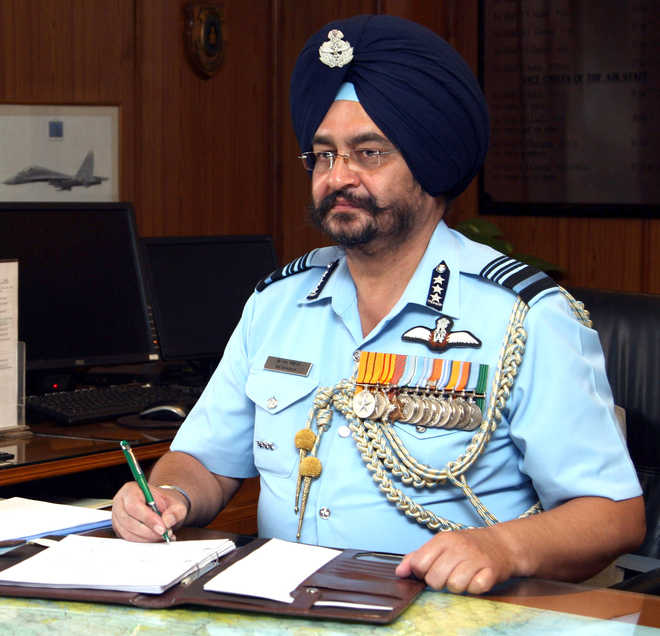
Air Marshal Birender Singh Dhanoa. Photo taken from website of www.indianairforce.nic.in
Ajay Banerjee
Tribune News Service
New Delhi, March 10
The Indian Air Force on Thursday sounded an alarm saying it does not have enough fighter jets to tackle a simultaneous two-front war with Pakistan and China.The Vice-Chief, Air Marshall BS Dhanoa, said at press conference: “We do not have adequate numbers to tackle a two-front war scenario”.The government is aware of this and steps are under way to ramp up the numbers.The IAF is now at its lowest combat strength in more than a decade. The Tribune was the first to report this on February 25.The IAF has informed the government of the gravity of the situation that the force is now in a shortage.Three squadrons of the vintage single-engine Soviet-origin MiG-21 and MiG-27 were phased out on January 1 this year, leaving the IAF with only 33 squadrons (16-18 planes in each).This is nine short of the government mandated 42 squadrons needed to tackle a simultaneous two-front war with China and Pakistan.Of the 33 squadrons, the vintage MiG-21 and MiG -27 form 11 squadrons. The Sukhoi 30-MKI populates 10 squadrons, the 1970s design British Jaguar is in six squadrons, followed by the French Mirage 2000 and the Soviet MiG-29 in two and three squadrons, respectively. The last three are being upgraded with better missiles and avionics.The country is now facing the reality of various projections regarding the IAF fighter fleet, made over the past 10 years by the Indian Air Force, strategic thinkers, successive reports of Parliamentary Committees on Defence, and reports of the Comptroller and Auditor General (CAG).Warnings on the lackadaisical pace of induction of new fighter jets into the Air Force and the resultant loss of ‘combative edge’ in battle are now ringing true, sources say. A senior official admitted, “We are in the middle of the predicted shortage”.It is the replacements which bother the IAF, which will be raising a squadron of the twin-engine Russian-origin Sukhoi 30-MKI this year, but much depends on the speed of Hindustan Aeronautics Limited (HAL), which is licensed to produce it in India. HAL, a Ministry of Defence (MoD) owned public sector undertaking, was mandated by the Cabinet Committee on Security in March 2006 to produce 16 planes annually and deliver 180 in phases by 2017. The project is running three years behind schedule.Till 2011, HAL had the capacity to produce just eight Sukhoi-30 jets annually, said a report of the CAG in 2014.The Sukhois were ordered in phases since 1997; the IAF wants 272 of these by 2020. The other choice is to seek faster induction of the 106 Tejas ‘Mark-1A’, which have been ordered. The MoD has set a 2018 deadline for the first aircraft to be ready with a target to complete its production by 2022-2023. In September, new specifications were agreed pon and the IAF accepted 43 modifications that could be carried out without changing the existing design.
